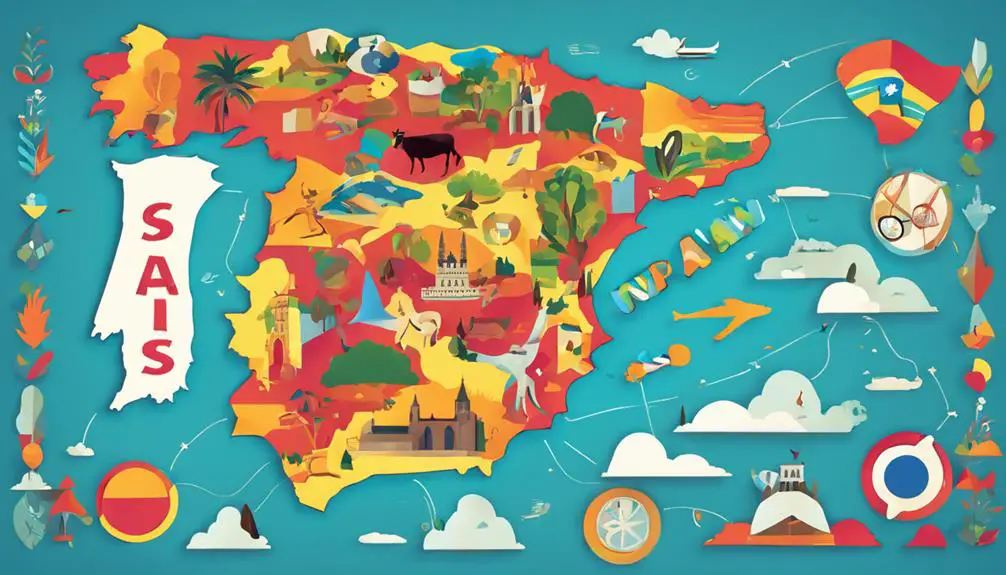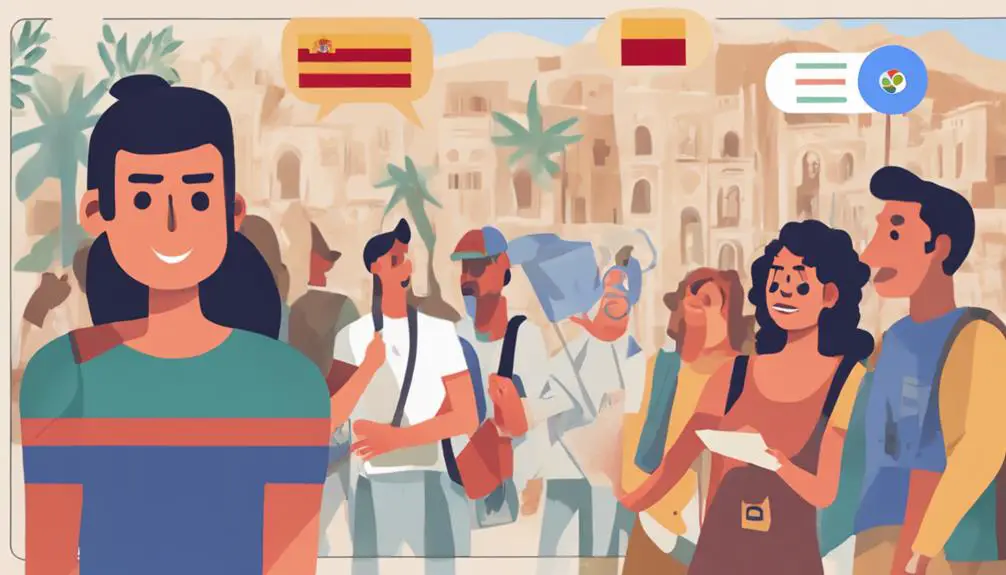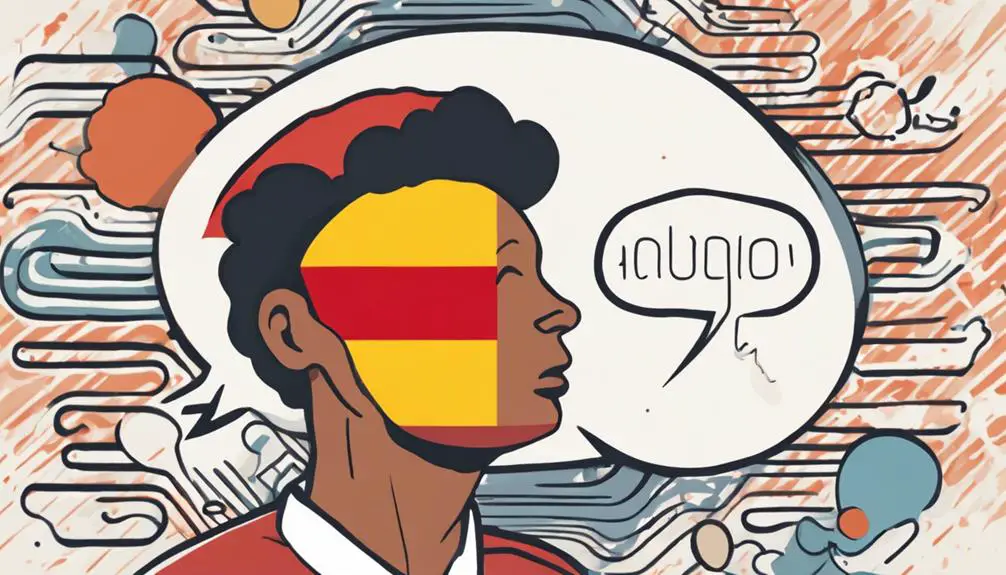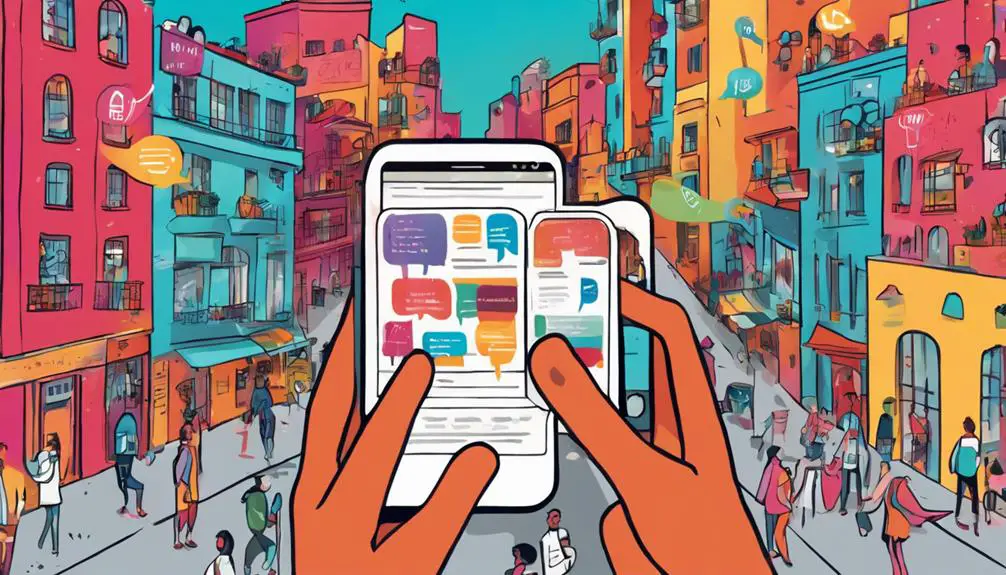When using Google Translate for Spanish, you'll encounter slang and regional dialects that can lead to miscommunication and cultural faux pas. Google Translate often struggles to accurately convey these nuances, resulting in errors. To overcome this, it's essential to understand regional dialects, master colloquial expressions, and consider cultural nuances. You'll need to adapt your translations to resonate with local cultures and be aware of idiomatic expressions. By acknowledging these limitations, you can improve translation accuracy and effective communication. As you explore the complexities of Spanish slang, you'll uncover more insights to refine your translation skills.
Navigating Regional Dialects

When using Google Translate to communicate in Spanish, you'll encounter regional dialects that can greatly impact the accuracy of your translations. Regional dialects, such as Andean Spanish, Rioplatense Spanish, and Caribbean Spanish, can markedly differ from the standard Spanish language. Dialectical variations can affect vocabulary, grammar, and pronunciation, making it essential to understand these differences when using Google Translate.
Regional accents, for instance, can alter the pronunciation of words, making it challenging for the translation tool to accurately transcribe spoken language. Additionally, dialects often have unique vocabulary and idiomatic expressions that may not be recognized by Google Translate.
For example, the word 'guagua' means 'bus' in some Latin American countries, but 'baby' in others. Failing to account for these dialectical variations can lead to miscommunications and misunderstandings.
To navigate these regional dialects, it's important to understand the local linguistic nuances and adjust your communication accordingly. By recognizing and adapting to dialectical variations, you can improve the accuracy of your translations and ensure effective communication in Spanish.
Mastering Colloquial Expressions
You'll need to master colloquial expressions to accurately translate informal conversations, as Google Translate often struggles to recognize regional slang and idiomatic phrases that are unique to specific cultures and communities. To bridge this gap, it's essential to understand the idiomatic nuances of the language, which can only be achieved through cultural immersion. By immersing yourself in the language, you'll gain a deeper understanding of how locals communicate, enabling you to identify and translate colloquial expressions with precision.
| Expression | Translation | Cultural Context |
|---|---|---|
| ¡Hagámoslo! | Let's do it! | Encouragement among friends |
| ¿Qué onda? | What's up? | Casual greeting among peers |
| Estoy pesado | I'm tired | Everyday conversation among colleagues |
| ¡Vale, vámonos! | Alright, let's go! | Agreement among friends |
Overcoming Google Translate Limitations

To effectively translate informal conversations, it's important to recognize Google Translate's limitations, such as its struggles to identify regional slang, idiomatic phrases, and cultural nuances.
When using Google Translate, you'll encounter technical glitches that impede accurate translations. For instance, the tool may misinterpret colloquial expressions or fail to grasp language nuances. This can lead to mistranslations, which can be harmful in professional or personal settings.
To overcome these limitations, it's vital to understand the context of the conversation. You should be aware of the regional dialects, idiomatic phrases, and cultural references that may not be accurately translated.
Additionally, it's necessary to proofread and edit translations to ensure they convey the intended meaning. By recognizing Google Translate's limitations and taking a proactive approach, you can minimize errors and produce more accurate translations. This will enable you to effectively communicate with native speakers and avoid misunderstandings.
Slang in Different Spanish Countries
As you navigate the complexities of Spanish language translations, understanding the diverse slang used in different Spanish-speaking countries becomes important. You'll soon realize that each country has its unique cultural nuances and dialectical diversity, which can greatly impact the accuracy of your translations.
In Mexico, for instance, you'll encounter slang like ' Güey' (dude) and 'Chido' (cool), which aren't commonly used in other Spanish-speaking countries. Meanwhile, in Argentina, you'll hear 'Che' (buddy) and 'Boludo' (dude), which have different connotations altogether. In Spain, the slang is often more formal, with expressions like 'Hola, ¿qué tal?' (hello, how are you?) being more common.
As you explore further into the world of Spanish slang, you'll discover that each country, and even region, has its own distinct flavor. From the Caribbean's 'Pana' (friend) to Chile's 'Pololo' (boyfriend), the variations are endless.
To effectively communicate with your target audience, understanding these cultural nuances and dialectical diversity is important. By doing so, you'll be better equipped to create translations that resonate with your audience, regardless of their geographical location.
Tips for Effective Communication

When communicating with your target audience, mastering the nuances of Spanish slang is essential, and it's important that you adapt your translations to resonate with the local culture. To effectively connect with your audience, you must consider the cultural nuances that can make or break your message.
Language barriers can lead to miscommunication, so it's imperative to use phrases and expressions that your audience understands. You'll need to be mindful of idiomatic expressions, colloquialisms, and regional dialects that may not have direct translations.
Using Google Translate can help, but it's not a substitute for human understanding. You must be aware of the context in which your message will be received. For instance, what works in Spain mightn't work in Latin America.
Be prepared to research and adjust your approach to accommodate the specific cultural nuances of your target audience. By doing so, you'll be able to bridge the language gap and communicate effectively with your audience.
Frequently Asked Questions
Can I Use Google Translate for Professional Translation Projects?
When considering using Google Translate for professional translation projects, you should be aware that it may not meet certification standards. Industry expectations dictate high-quality, accurate translations that machine translation tools often can't provide.
While Google Translate is useful for casual translations, it's not a substitute for human translators who understand cultural nuances and context. For professional projects, it's best to opt for certified translators who can guarantee precision and quality.
How Do I Type Accents and Special Characters on My Keyboard?
To type accents and special characters on your keyboard, you'll need to use keyboard shortcuts or character codes. For Windows, use the Alt code method: press and hold the Alt key, type the code, and release the Alt key.
For example, Alt + 0233 produces an 'é'. On a Mac, use the Option key with letter combinations, like Option + e for 'é'.
You can find character codes online or use the Character Map tool on Windows or Keyboard Viewer on Mac.
Is Google Translate Suitable for Translating Humor and Sarcasm?
Exploring the complexities of language is like mapping unexplored territories. When it comes to translating humor and sarcasm, you'll find that even the most advanced tools, like Google Translate, can falter.
Cultural nuances and idiomatic expressions often get lost in translation, leading to comedic misfires or awkward phrasing. While Google Translate can handle straightforward translations, it struggles to capture the subtlety and context-dependent nature of humor and sarcasm, making human oversight essential for accurate conveyance.
Can I Use Google Translate to Learn Spanish Grammar Rules?
When learning Spanish grammar rules, you'll find that Google Translate can be a helpful supplement, but not a sole resource. While it can provide general grammar explanations, it often struggles to convey language nuances and grammar exceptions.
You'll need to complement Google Translate with other resources, such as textbooks or language courses, to gain a deeper understanding of Spanish grammar rules and their many exceptions.
Are There Alternative Translation Tools to Google Translate?
As you navigate the labyrinth of language translation, you're not limited to Google Translate. Alternative tools await, like hidden treasures.
You can harness the power of DeepL Analysis, renowned for its accuracy and nuance. Or, you might opt for Microsoft Translator, which boasts a robust set of features.
Both alternatives offer a fresh perspective, allowing you to fine-tune your language skills and explore new linguistic landscapes.
Conclusion
You've mastered the nuances of Spanish slang, from regional dialects to colloquial expressions. But did you know that 61% of Spanish speakers use internet translators, like Google Translate, to communicate?
While these tools have limitations, understanding their shortcomings is key to effective communication. By recognizing the differences in slang across Spanish-speaking countries, you'll be better equipped to navigate everyday conversations with confidence.







